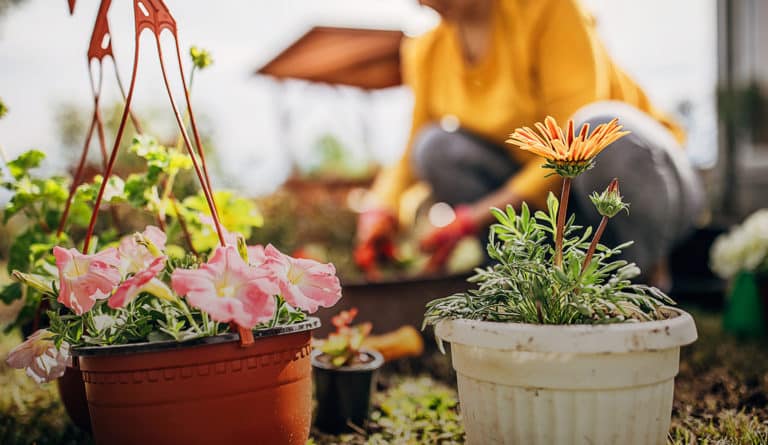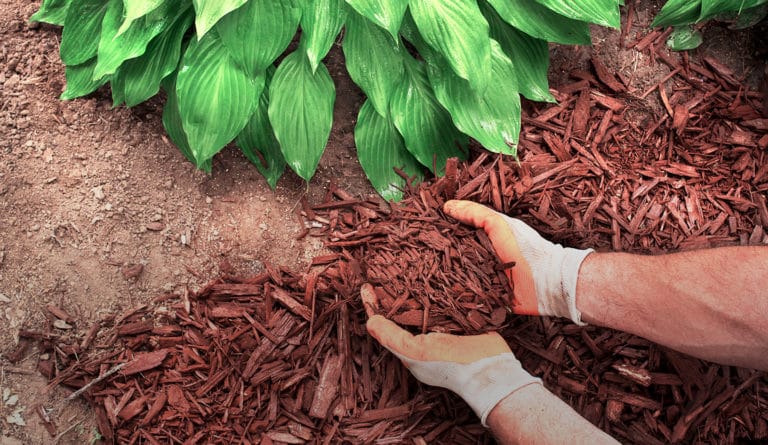
peppers
aka Capsicum
Growing your own peppers unlocks a world of bright colours, intense flavours and sometimes volcanic heat! So many varieties, from the gentle giant Bell Pepper, to the scorching little Scotch Bonnet.
variations
Bell Pepper, Poblano Pepper, Anaheim Pepper, Serrano Pepper, Habañero Pepper, Cayenne Pepper, Rocoto Pepper, Piri Piri, Shishito, Banana pepper, Sweet Italian pepper, Pimento pepper, Piquillo, Cuban pepper, Pasilla, Jalapeno, Fresno, Yellow chile, Guajillo, Bird’s Eye, Scotch Bonnet
light
full sun
Peppers love the heat and don’t enjoy the cold. They grow best when they get 6-8 hours of sunlight.
water + feeding
average needs
Peppers love a good, long watering, but allow the soil to dry almost completely between watering. One watering per week is usually enough, but watch the weather, and your peppers. If it’s extremely hot and dry, or you notice wilting leaves, increase the water. A plant food like Miracle-Gro® Shake ‘n Feed Tomato, Fruit & Vegetable Plant Food can really boost the growth. Be careful not to use a plant food with too much nitrogen. This will grow lots of leaves and not many peppers.
toxic
non-toxic
Safe for humans and generally non-toxic for cats and dogs. Spicy Warning! Some peppers are wicked spicy and can upset your pet’s digestion. You wouldn’t feed kitty suicide wings.
size
medium to big
Pepper plants range in size quite drastically by species. Some small and spicy varieties are planter sized. Some larger peppers like the classic Bell grow between 18 to 24 inches and 3 to 6 feet. They’ll need staking at these sizes.
pro tip
think crop rotation
Don’t plant peppers where you’ve recently grown other crops in the nightshade family (eggplants, potatoes or tomatoes), as this can expose your pepper plants to disease.
fun fact
same same, but different
Red Peppers and Green Peppers are the same Pepper. The only difference is how long they’re left on the vine, turning green to red. That gives you an easy way to grow some visual variety.


beyond the basics
-
soil & potting
Wait until it’s warm to plant outdoors. Soil temps should be around 16°C. Space larger varieties like the classic Bell 18 to 24 inches apart. They grow quite large and spread roots.
-
companion planting
Pepper plants grow well beside asparagus, basil, carrots, cucumbers, eggplant, endive, oregano, parsley, rosemary, squash, Swiss chard, and tomatoes. Don’t plant peppers next to beans, broccoli, cabbage cauliflower, or fennel.
-
harvesting
Pick your peppers when they reach full size and full colour. Bell peppers can be picked green, but they’ll turn into sweeter red peppers if you keep them on the plant. Just saying.
-
pest control
Routinely look under the leaves of your peppers. Most common pests are Aphids (clusters of tiny greenish-yellow bugs) and Spider Mites (tiny white spots and silky threads). If you see either of these little suckers, treat immediately with a gentle pesticide like Ortho® Bug B gon ECO Insecticidal Soap.

troubleshooting
-
why do I have lots of leaves, but no fruit?
Possibility 1: Some combination of too much nitrogen and not enough phosphorus. Put compost in the soil before planting, and add to mature plants by side dressing the roots. Or add a phosphorous-rich fertilizer like Miracle–Gro® Nature’s Care Organic Bone Meal (not Blood Meal!).
Possibility 2: Cold at night. Build a wire cage around your plants and tent them with plastic sheeting.
Possibility 3: Not pollinating. They need a breeze to spread the pollen within their flowers. You can simulate this by shaking them gently.
-
why are my peppers small or flat?
Incomplete Pollination: Plant some bright, cheery flowers in your vegetable gardens to attract bees and other pollinators. Peppers can usually self-pollinate if there’s enough of a breeze. You can become the pollinator. Gently shake the plants, or even pick a couple pepper flowers and dab them into the ones still on the plant.
-
what ate my stems right near the soil level?
Probably Cutworms. Check the soil for gray grubs about 1/2 inch (1 cm). They love to eat stems, roots, and leaves. Protect your vines with a 3 inch paper collar around the base. You can also sprinkle wood ash around the base. It helps to keep your garden weed free.
-
why do I have deformed or yellow leaves?
Likely Aphids. Look for teeny-tiny oval, and yellowish– green pear-shaped insects, clustering under the leaves. They excrete a sticky waste called honeydew (far too pleasant a name) which turns into black powdery mold. Treat with insecticidal soap.
-
why are my peppers not growing?
Your peppers are cold. Plant when it’s warm, and the soil reaches 60 F (16 C). You can build a wire frame around your plants and tent them with plastic during cold nights. Consider hardier varieties better suited to your regional climate.



